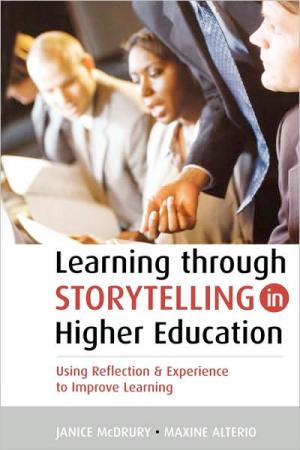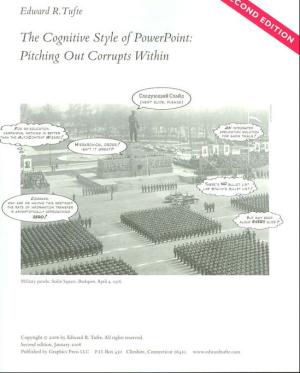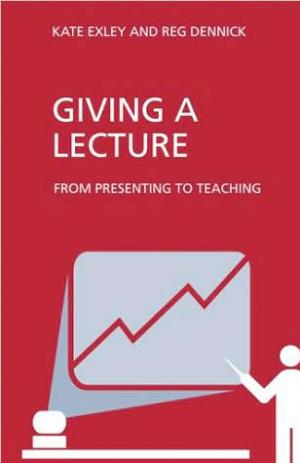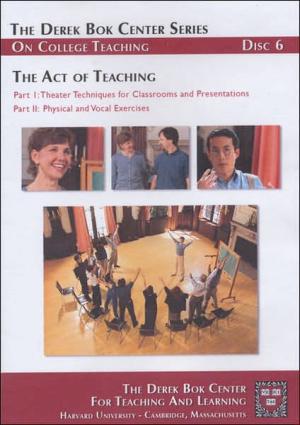Resources
Case study by a professor who transformed his lecture class into a cooperative learning class.
Simple orientation to Problem Based Learning with helpful how-to PDF files to download.

Learning through Storytelling in Higher Education: Using Reflection & Experience to Improve Learning
"Learning Through Storytelling in Higher Education" explores ways of using storytelling as a teaching and learning tool. When storytelling is formalized in meaningful ways, it can capture everyday examples of practice and turn them into an opportunity to learn - encouraging both reflection, a deeper understanding of a topic and stimulating critical thinking skills. The technique can accommodate diverse cultural, emotional and experiential incidents, and may be used in many different contexts eg formal/informal; one-on-one/group setting. The authors outline the different models of storytelling and explain how to make use of this technique and encourage a 'storytelling culture' within the workplace or in tutorial sessions. Academic yet accessible, this book provides a new perspective on learning techniques and will be a great asset to any educator looking to improve reflective practice. (From the Publisher)
One page Teaching Tactic: using study sheet handouts to help students learn from lectures, in a compressed "Maymester" class.

In corporate and government bureaucracies, the standard method for making a presentation is to talk about a list of points organized onto slides projected up on the wall. For many years, overhead projectors lit up transparencies, and slide projectors showed high-resolution 35mm slides. Now "slideware" computer programs for presentations are nearly everywhere. Early in the 21st century, several hundred million copies of Microsoft PowerPoint were turning out trillions of slides each year. Alas, slideware often reduces the analytical quality of presentations. In particular, the popular PowerPoint templates (ready-made designs) usually weaken verbal and spatial reasoning, and almost always corrupt statistical analysis. What is the problem with PowerPoint? And how can we improve our presentations? This slim volume from legendary "information design" guru Edward Tufte answers these questions with Tufte's usual wit, concision, and style. (From the Publisher)

The second edition of Giving a Lecture builds upon the reputation and success of the Key Guides for Effective Teaching in Higher Education series. It is an excellent resource for those new to teaching at the University and College level and for those who just want to reflect upon and refresh their lecturing practice. The best selling first edition has been fully revised, and this edition continues to cover all the basics on how to go about lecturing while maintaining its jargon-free and accessible style. New lecturers will find the second edition equips them with the essential tools and guidance for delivering a successful lecture, and explains exciting new developments along with the fundamentals of lecturing. Addressing a number of rapid developments that have occurred since its first publication in 2004, the second edition provides: * A new chapter on podcasting and e-lecturing * Much more on the effective use of PowerPoint * Guidance on using interactive handsets to promote active learning and engagement * Consideration of the role of Lectures in problem based learning (PBL) courses * An expanded chapter that addresses current diversity/inclusivity issues * A fresh look with new Illustrations * Updated 'Recommended Reading and Web-Resource' sections This handy guide uses a multi-disciplinary approach based on sound educational theory to provide clear guidance and engaging ideas on giving a memorable and motivational lecture. Readers will find its straightforward approach is both readable and very practical, and new University and College Teachers, Graduate Teaching Assistants, Part-time Tutors, Teaching Clinicians and Practitioners, together with those interested in educational and staff development, will find this book provides them with all the guidance they need to lecture with confidence and skill. (From the Publisher)

Teachers can convey their ideas more powerfully if they take time to improve their presentation skills. The Act of Teaching , Nancy Houfek, Head of Voice and Speech for the American Repertory Theatre at Harvard University, leads a workshop that stresses the importance of communication with the whole self in order to reach an audience. Throughout the workshop, she introduces participants to the same techniques that actors use to prepare and deliver a performance, including warm-ups, relaxation, strengthening, and visualizing exercises. In Part I, Theater Techniques for Classroom and Presentation, Houfek focuses on overcoming stage fright, knowing your objectives, and "landing your message." In part II, Physical and Vocal Exercises , she leads teachers through 20 minutes of exercises specifically designed to prepare them for the physical challenges of the classroom, beginning with "Waking Up the Body," and moving to vocal warm-ups that treat the voice as an instrument requiring care. Together, these techniques and exercises present a new set of resources that greatly broaden the avenues we customarily use in communicating with colleagues and students. An illustrated guide to exercises is included ad a PDF. (From the Publisher)

Teaching large classes is a fact of life for professors at many institutions. In addition to pedagogy, instructors of these courses must also be concerned with legal, ethical, financial, technological, personnel, and management issues. Virtually all introductory courses are large ones, as are the popular intermediate courses at large institutions. Typically, little or no training or instruction is provided to new professors about how to manage large classes successfully. This book is a valuable resource for any college teacher, adjunct or full-time, facing a large class. It will also be useful for college administrators who might want to issue it to teachers, especially adjuncts, assigned to large classes for the first time. A distillation of years of experience by the authorwho started his college teaching career in 1969in teaching large classes and in coaching other professors to do the same, this guide is concise and user-friendly. It employs teaching-as-acting as a common theme, with many practical examples covering all of the major aspects of organizing, managing, and teaching a large lecture course in any field. (From the Publisher)
PowerPoint can be a genuine aid to theological education by providing a medium for employing visual art in the classroom. But PowerPoint does not and should not replace the ordinary stuff of teaching and learning theology: reading, lecturing, discussing texts, and writing papers. Like any other tool, its pedagogical benefit depends on discerning use. Particular care must be used to blunt PowerPoint's tendency to produce a disembodied, decontextualized learning environment. Using PowerPoint to incorporate art into theology classes is not merely a strategy for making verbal points more powerfully. Art can sometimes go where theological words cannot.